#ganachakra
Photo
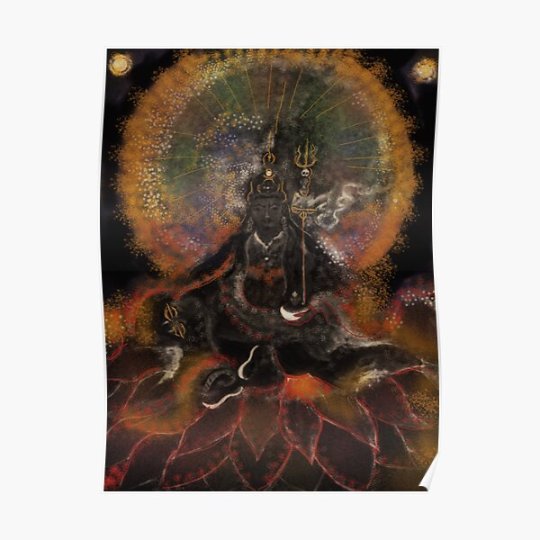
This past Monday, Guru Rinpoche Day, I was able to attend my first Ganachakra. It was an amazing experience. Have I mentioned how much I love the Vajra Kula?
#buddhism#tantra#tantricbuddhism#padmasambhava#gururinpoche#gururinpocheday#ganachakra#kula#vajrayana
6 notes
·
View notes
Text
Works in Progress (WIP) list
Super Junior hyung line foursome
SHINee Kibum x Jonghyun
NCT/WayV Ten - tantra trilogy parts 2 and 3 (Ganachakra is Part 1)
Ateez San NSFW behavioural analysis
Vampire!TXT - Part 1
NCT Ten x Yuta oneshot
Ten x ? x ? (surprise)
14 notes
·
View notes
Text
Yeshe Tsogyal About Karmamudra
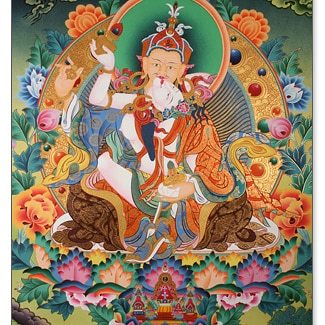
After I had finished, the Nepali girl Kalasiddhi performed many prostrations and circumambulations and then made this request:
Mother, when you have vanished into inner space,
What should we zap-lam initiates of the Tibetan
mysteries do?
Who will dispel obstructing spirits and stimulate our
meditation?
Still sustain Tibet with your compassion!
I answered her:
O listen Dakini, well-born lady,
Mantra-born maiden with siddhi,
You who show the path of virtue
With a well-endowed body's selfless aspiration.
This community and future travelers on the zap-lam path,
Must first find a teacher especially qualified,
And from that teacher possessing every spiritual sign,
You must request initiation and pledge fulfillment of your vows.
Then train your [sexual] energy flows until you gain self-control [over lust and orgasm],
And after receiving the three superior initiations, transmute the ensuing desire,
To perfect the nature of the four levels of joy,
For six months or until signs of achievement appear in the body.
Unite male (solar) and female (lunar) energies,
Developing the method of mixing higher and lower energies,
Female assisting male and male assisting female,
The principles of each being separately practiced.
Intensify and elevate your practice, broadening the horizons of your bliss;
But if bliss and Emptiness are not identified,
Profitlessly you stray from the path of Tantra:
Apprehend the intrinsic unity of bliss and Emptiness.
Guard the samaya [oath of chastity] of Guru and Dakini like your eyes;
In various skillful ways enjoy the five sacred substances;
Practice to perfection the skill of retaining your seed-essence [semen, bodhichitta];
Be attentive to obstacles and hostile powers [your egos, defects, vices];
If the samaya [chastity] is impaired strive to restore it.
About the body: do not let it slip into old habits [of lust and orgasm]
Or you will become like ordinary men and women [who are animals];
With the confidence of the deity, meditate charged with power
And inform your focal points of energy as a principal and his circle of deities.
About speech: concentrate upon mantra and energy flows -
Without energy control your sexual activity is fornication;
Properly execute the exercises of 'drawing up' [the spine] and 'saturating' [brain and heart]
And with the [iron] nails of your imagination apply an hermetic seal [to prevent any loss of energy].
About mind: identify the conditioned mind with seed-essence [bodhichitta] itself;
If seed-essence [semen, bodhichitta] is lost in actuality [through orgasm]
The karma of slaying a Buddha is incurred;
At all costs gain self-control [over lust and orgasm].
Absorb yourself intently in [comprehension of] the experience of desire,
For without [comprehension] the mysteries have no meaning;
Desire transmuted into purity bliss [free of lust] is the goal fulfilled.
Preserve constant cognition of the primal purity of experience [the Absolute];
Protect the samaya [of chastity] like your body and life,
For if it is broken there is no authority to restore it.
The foregoing is advice upon meditation practice.
All you initiates into the tantric mysteries
Should bury your ambition and conceit in a pit,
Pour your sanctimony and pride into a river,
Burn your obsessive lust and infatuation in fire,
Cast your selfish aggression and perverse behavior on the wind,
And dissolve your shamelessness and deceitful lies in space.
Protect your secret sexual practices from prying eyes;
Do not be loose with your sexual organs, bind them fast;
Do not flaunt your signs of success;
Rely upon the Yidam deity [your Innermost] as the indivisible three roots;
Maintain regular torma offerings and ganachakra feast rites [Eucharist];
Preserve the seed of kindness [bodhichitta, semen] for the sake of other beings;
Do not break the flow of formless benediction.
The foregoing is general instruction upon Action.
With that understanding fixed in your heart, O Siddhi,
You and I are essentially one,
And through emanation we will give purpose to beings of the future.
(Fruition and Buddhahood, pp.155-7); The biography of Yeshe Tsogyel (Bod kyi jo mo ye shes mTsho rgyal gyi mdzad tshul rnam par thar pa gab pa mngon byung gyud mangs dri za'i glu 'phreng), a revealed text (terma) attributed originally to Gyelwa Jangchub and Namkhai Nyingpo and revealed by Taksham Nuden Dorje; translated by Keith Dowman and Choepel Namgyel.
#wisdom#spirituality#mindfulness#meditation#religion#buddhism#self care#zen#visualization#tibet#karmamudra
10 notes
·
View notes
Text
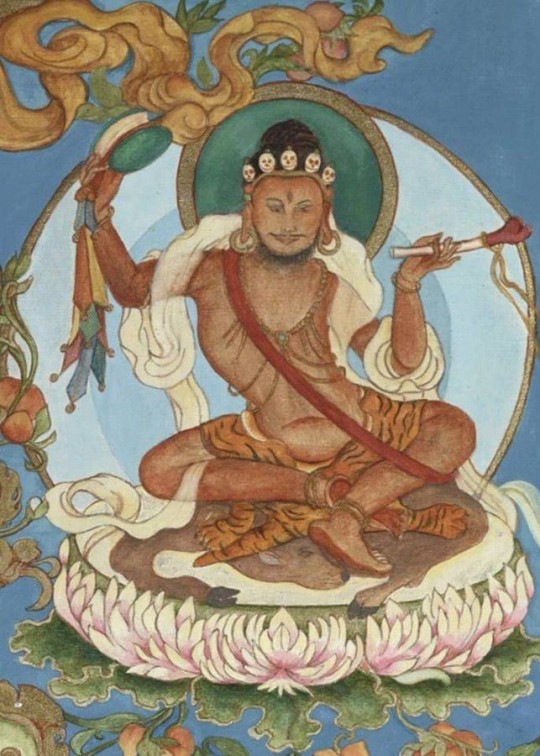
I, and the sky, am without thought!
Knowing my body as the deity,
I'm free of clinging to empty objects!
Knowing my mind as the Guru,
I make no requests of others!
The dakinis are all present in my body!
I do ganachakra nowhere else!
As appearances are purified impartially,
I'm free of dualistic thought!
As the four extremes are purified on the spot,
mind's projections are exhausted!
As awareness has no coming or going,
I don't know how to speak of realization!
~ Padampa Sangye
我與天空無有念
知曉此身為本尊
空性之物無執著
知曉我心為上師
與他人不作索求
空行母遍住我身
不往別處作薈供
既現象無偏清淨
我即遠離二邊念
四邊當下得清淨
心之投射皆消弭
覺知無有來與去
闡述覺悟我不知
~ 帕當巴桑杰
1 note
·
View note
Text
Amrita
Mohini, the female form of Vishnu, holding the pot of amrita which she distributes amongst all the devas, leaving the asuras without. Darasuram, Tamil Nadu, India
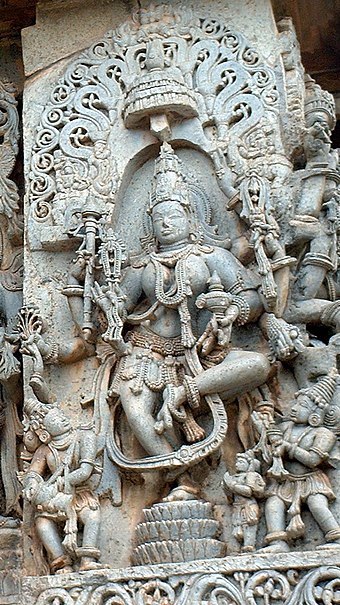
Amrita (Sanskrit: अमृत, IAST: amṛta), Amrit or Amata (also called Sudha, Amiy, Ami) is a word that literally means "immortality" and is often referred to in ancient Indian texts as nectar. "Amṛta" is etymologically related to the Greek ambrosia[1] and carries the same meaning.[2] Its first occurrence is in the Rigveda, where it is considered one of several synonyms for soma, the drink of the devas.
Amrit has varying significance in different Indian religions. The word Amrit is also a common first name for Sikhs and Hindus, while its feminine form is Amritā. The traditional masculine name is Amrith with the feminine name being Amritha.
Hinduism
Amrita is repeatedly referred to as the drink of the devas, which grants them immortality. Despite this, the nectar does not actually offer true immortality. Instead, by partaking it, the devas were able to attain a higher level of knowledge and power, which they had lost due to the curse of Sage Durvasa, as described in the samudra manthana legend. It tells how the devas, after the curse, begin to lose their immortality. Assisted by their rivals, the asuras, the devas begin to churn the ocean, releasing (among other extraordinary objects and beings) the amrita.[3]
Amrita is sometimes said to miraculously form on, or flow from, statues of Hindu gods. The substance is consumed by worshippers and is alleged to be sweet-tasting and not at all similar to honey or sugar water. Amrita was the last of the fourteen treasures that emerged from the churning of the ocean and contained in a pot borne by Dhanvantari, the physician of the devas.
Sikhism
In Sikhism, amrit (Punjabi: ਅੰਮ੍ਰਿਤ) is the name of the holy water used in Amrit Sanchar, a ceremony which resembles baptism. This ceremony is observed to initiate the Sikhs into the Khalsa and requires drinking amrit. This is created by mixing a number of soluble ingredients, including sugar, and is then rolled with a khanda with the accompaniment of scriptural recitation of five sacred verses.
Metaphorically, God's name is also referred to as a nectar:
ਅੰਮ੍ਰਿਤ ਸਬਦੁ ਅੰਮ੍ਰਿਤ ਹਰਿ ਬਾਣੀ ॥
Amrit sabad amrit har baṇi.
The Shabda is Amrit; the Lord's bani is Amrit.
ਸਤਿਗੁਰਿ ਸੇਵਿਐ ਰਿਦੈ ਸਮਾਣੀ ॥
Satgur seviai ridai samāṇi.
Serving the True Guru, it permeates the heart.
ਨਾਨਕ ਅੰਮ੍ਰਿਤ ਨਾਮੁ ਸਦਾ ਸੁਖਦਾਤਾ ਪੀ ਅੰਮ੍ਰਿਤੁ ਸਭ ਭੁਖ ਲਹਿ ਜਾਵਣਿਆ
Nānak amrit nām sadā sukhdāta pi amrit sabh bhukh lėh jāvaṇia.
O Nanak, the Ambrosial Naam is forever the Giver of peace; drinking in this Amrit, all hunger is satisfied.[4]
Theravada Buddhism
According to Thanissaro Bhikkhu, "the deathless" refers to the deathless dimension of the mind which is dwelled in permanently after nibbana.[5]
In the Amata Sutta, the Buddha advises monks to stay with the four Satipatthana: "Monks, remain with your minds well-established in these four establishings of mindfulness. Don't let the deathless be lost to you."[6]
In the questions for Nagasena, King Milinda asks for evidence that the Buddha once lived, wherein Nagasena describes evidence of the Dhamma in a simile:
"Revered Nagasena, what is the nectar shop of the Buddha, the Blessed One?"
"Nectar, sire, has been pointed out by the Blessed One. With this nectar the Blessed One sprinkles the world with the devas; when the devas and the humans have been sprinkled with this nectar, they are set free from birth, aging, disease, death, sorrow, lamentation, pain, grief and despair. What is this nectar? It is mindfulness occupied with the body. And this too, sire, was said by the Blessed One: 'Monks, they partake of nectar (the deathless) who partake of mindfulness that is occupied with the body.' This, sire, is called the Blessed One's nectar shop."
— Miln 335[7]
Vajrayana Buddhism
Amrita (Wylie: bdud rtsi, THL: dütsi) also plays a significant role in Vajrayana Buddhism as a sacramental drink which is consumed at the beginning of all important rituals such as the abhisheka, ganachakra, and homa. In the Tibetan tradition, dütsi is made during drubchens - lengthy ceremonies involving many high lamas. It usually takes the form of small, dark-brown grains that are taken with water, or dissolved in very weak solutions of alcohol and is said to improve physical and spiritual well-being.[8]
The foundational text of traditional Tibetan medicine, the Four Tantras, is also known by the name The Heart of Amrita (Wylie: snying po bsdus pa).
The Immaculate Crystal Garland (Wylie: dri med zhal phreng) describes the origin of amrita in a version of the samudra manthana legend retold in Buddhist terms. In this Vajrayana version, the monster Rahu steals the amrita and is blasted by Vajrapani's thunderbolt. As Rahu has already drunk the amrita he cannot die, but his blood, dripping onto the surface of this earth, causes all kinds of medicinal plants to grow. At the behest of all the Buddhas, Vajrapani reassembles Rahu who eventually becomes a protector of Buddhism according to the Nyingma school of Tibetan Buddhism.
Inner Offering (Wylie: Nang chod, Chinese: 内供) is the most symbolic amrita offering assembly, and the Inner Offering Nectar Pill (Wylie: Nang chod bdud rtsi rilbu, Chinese: 内供甘露丸) is a precious and secret medicine of Tibetan Buddhism, which are only used internally for higher ranking monks in Nyingma school. Its ingredients including Five Amrita and Five Meat, which represents five buddha, and five elements respectively. According to Tantras of Chakravarti, and Tantras of Vajravārāhī, a ceremony needs to be hold for melting and blessing the Inner Offering Nectar. Five Nectar needs to be arranged in four directions: yellow excrement in the east, green bone marrow in the north, white semen in the west and red blood in the south, blue urine is placed in the center. Four Nectar should come from wise monks and the ova should be collected from the first menstruation of a blessed woman. The Five Meats are arranged similarly, meat of black bull in the southeast, the meat of the blue dog in the southwest, the meat of the white elephant in the northwest, the meat of the green horse in the northeast, and the meat of a red human corpse in the center. After the ceremony, these ingredients will transform into an one taste (ekarasa) elixir, which bestows bliss, vitality, immortality and wisdom. Actual modern practitioner will take a 'synthesized essence' of the Nectar Pill and combined it with black tea or alcohol, but mostly the "Nectar Pill" are derived from plants.[9]
Chinese Buddhism describes Amrita (Chinese: 甘露; pinyin: gānlù) as blessed water, food, or other consumable objects often produced through merits of chanting mantras.
See also
Ameretat
Ambrosia
Mata Amritanandamayi
Panchamrita
Peaches of Immortality
Soma
Traditional Tibetan medicine
73 notes
·
View notes
Photo

The Kagyu Golden Rosary - Marpa Marpa travelled to India from Tibet at great personal peril across the Himalayas to study with his principal teachers, Naropa and Maitripa. Marpa Chökyi Lodrö, was born in Lhodrak Chukhyer to a well-to-do family. He began studying at a young age and was wild and untamed compared to other children. Marpa first received training for three years at Mangkhar with Drokmi Shakya Yeshe and mastered the Sanskrit language. He decided to travel to India to study dharma with renowned Indian buddhist masters. Marpa returned home to Lhodrak and converted his entire inheritance into gold for his travel expenses and to make offerings to his Indian gurus for requested teachings. JOURNEYS TO INDIA Marpa set out on his journey to India. Arriving first in Nepal, he studied with Paindapa and Chitherpa, two famous students of Naropa. Later, Paindapa accompanied Marpa to Pullahari, near Nalanda University, where Naropa taught. Marpa spent twelve years receiving abhishekas, instructions, and studying with Naropa and other great Indian gurus to whom Naropa sent him to study or receive instructions. At the end of twelve years, Marpa offered a ganachakra and sang his first song of realization to his guru, Naropa. Shortly after, he set forth on his journey back to Tibet, where he taught and continued his dharma activities. Subsequently, Marpa traveled to India two more times and studied with Naropa and other great mahasiddhas of India. Of these, his main gurus were Naropa and Maitripa. In total, he traveled three times to India and four times to Nepal. On his third visit, Marpa went through an adventure in finding Naropa, because Naropa, having already entered into the tantric conduct, was nowhere to be found. However, with determination, trust, and devotion, Marpa managed to find Naropa and receive the final teachings and instructions from him. At that time, Naropa prophesied that a family lineage would not continue for Marpa, but that his lineage would be carried on by disciples—especially one with the appearance of a monk and the inner realization of Mahayana. This prophecy foretold of the arrival of Lord Gampopa. BRINGING THE COMPLETE DHARMA TO TIBET Marpa now had received the full transmissions, so Naropa formally declared Marpa to be his dharma successor. Marpa brought the teachings and lineages of vajrayana and mahamudra back to Tibet. Naropa in general had seven major disciples including Paindapa, Chitherpa, Shri Shantibhadra or Kukuripa, and Maitripa. His most well known disciple and lineage holder was the Marpa, the translator. Upon his return to Tibet, Marpa spent many years translating Buddhist scriptures and contributed to the effort to bring the complete buddhadharma to Tibet. Many of his translations are part of the Kagyur and Tangyur. Marpa continued to practice and give teachings, abhishekas, and transmissions to many students in Tibet. After his third visit to India, Mila Thöpaga or Milarepa became his disciple, who inherited his lineage in full. Marpa along with his wife, Dakmema and their sons lived in Lhodrak in the southern part of Tibet. Marpa had numerous disciples. The four most outstanding students were known as the “Four Pillars:” 1) Ngok Chöku Dorje, who became the principal student to receive the transmissions and master the explanations of the Tantras, 2) Tsurtön Wanggi Dorje, who became the main student to receive the transmissions and master the practice of Phowa [transference of conciousness], 3) Meytön Chenpo, who became the primary student to receive the transmissions and master the practice of Ösal [luminosity], and 4) Milarepa, who became the principal student to receive the full transmissions and master the view, meditation, and conduct. Marpa gave the full transmission of his lineage to Milarepa, who became his spiritual heir and continued the lineage of Naropa. The principal student and lineage heir of Marpa was Milarepa. source: https://ift.tt/2kpyApc
1 note
·
View note
Photo
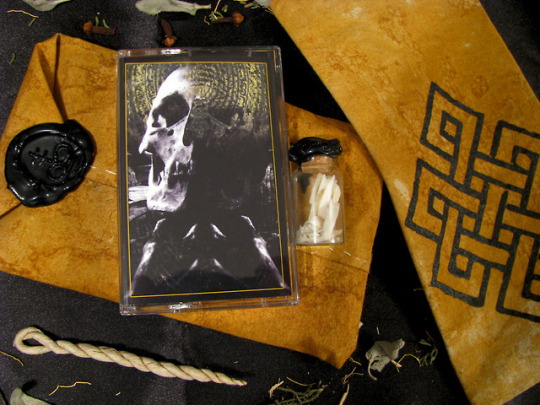


"As long as you're enthralled by a lifeless form, you are not free" Bodhidharma
Evoking Shadows of Death is a collaboration with Russia's ritual collective Phurpa. Fusing ultrasonic vibrations and grim necro-atmospheres with the harmonious chants and deep, droning reverberations of the tantric voice, these two tracks are designed to help the chod practitioner tap into the power of Death. Only those who have visited one of Tibet's charnel fields and witnessed the offering of a corpse to vultures understand the full impact of what the Chöd tradition refers to as places that inspire terror. Chöd involves a form of self-sacrifice: the practitioner visualizes their own body as the offering at a ganachakra.
Evoking Shadows of Death helps envision such atrocities, delving into ultra-dark psychedelia by way of the most demented ritual ambient. Traditionally, Chöd is regarded as challenging, potentially dangerous and inappropriate for some practitioners. Evoking Shadows of Death is meant for meditative purposes, but can be listened to even by the most naive of ears.
Nothing could be further from the Western relation to music, in which the listener stands outside, analyzes and perhaps admires it -- an essentially passive and appreciative stance. Evoking Shadows of Death nudges you towards the steps to transmute through the aural plane and, through a process in which you must actively participate, requiring utmost concentration and mental stamina, become that of which the center is the symbol.
This transformation does not fall spontaneously, upon the listener: the practitioner must fully engage in the process.
This mystical experience is achieved, not bestowed.
The special edition of Evoking Shadows of Death will come in a natural cotton bag silkscreened with the endless knot that was dyed and handstitched by Darea Plantin. This bag will also include a glass bottle containing shattered human tibia bone sealed with her left thumb print and one Yeshe Walmo rope incense from Tibet. The bag is sealed with black wax stamped with a sigil of destruction.
This special edition cassette is strictly limited to only 20 copies.
A regular version will be available through Black Goat Records
30 notes
·
View notes
Link
0 notes
Text
Ganachakra
Trigger warning! This is dark and violent.
I was reading up on chöd and attempted to visualize myself as a tantric feast. Quite the experience. It was something I did in the moment, and I’m not initiated in the religion or anything so I don’t know any of the gods. As a result I just imagined sort of giving myself up to a pride of lions. I didn’t just throw myself at them. I imagined being considered one of the family. Laying with them, playing with them. We slept in this sort of abandoned temple where there were pools of water. I could feel the water on my skin and their fur rubbing up against me. Blue Lotus everywhere.
They weren’t having a lot of success hunting and it worried me. However, I didn’t feel compelled to do anything until one of the cubs died of starvation. Then I just stripped down and slit my throat and my wrists with a huge smile on my face. They mourned me for a bit. The lionesses butt their heads against me to see if I would wake up, the cubs pressed their paws against my face to see if I would play, but eventually they gave up and began to eat. It was so strange to imagine. The way my limbs pulled, the way they licked and sucked at my blood, the crack of my bones - I tried to imagine the sounds as well as how it would feel- the feeling of being stabbed by teeth and claws. The cubs pulled out my intestines and ran around with them (I’d seen them do something similar in Big Cat Diary once). They pulled out my ribs and ran off with those too, trotting around with their tails swaying high, they seemed to smile around the blood and the bones. It always amazed me how playfully macabre cubs could be when eating.
Back at the feast, my toes would quite literally snap off as they bit at them, my skin would pull- like when I use to sit improperly and have to slide the top of my foot across the floor to get up. I was always scared that while my skin looked perfectly fine, It felt like I had moved the veins and whatever else was under it out of place. It was a strange, painful feeling. But not as painful as I imagined. I lay there for a bit, smiling all the while. Then the Lion arrived and decided to take his share. I looked like a complete mess at this point. My torso was a poor man’s blood eagle, what use to be my legs was meat weakly clinging to the bone, and my once brown skin was covered in red, pink, and white. He came from behind. He opened his mouth and maneuvered them under my head like a shovel, enclosed them around my skull and I braced for the pressure...My body did this really weird jolt and my eyes involuntarily opened so I got up and rolled over to sleep.
I don’t know how a tantric feast is actually suppose to go, but this was an interesting experiment. Next time I want to do more. I’d like to imagine the heat, how the blood would feel, how the boood would smell, taste, how my heart beat would slow, their breath, their growls and the sounds they’d make when eating. I also think I should take out the part where they mourn me and not wear clothes, as this is suppose to be about ego death.
0 notes
Text
Five Dakinis Families
All dakinis have extraordinary powers -- the worldly ones and those referred to as wisdom dakinis -- but only the motivation of the latter is completely pure. The life story of the Mahasiddha, Tilopa (988 - 1069) tells how after he met the dakinis who could manipulate appearances, he encountered the ones embodying the five activities, and then at last, in the heart of the mandala, The Wisdom Dakini, herself. The Life of Padmasambhava According to Yeshe Tsogyal describes a similar progression.
Tilopa Meets the Dakinis
The 4th Chetsang Rinpoche (1770-1862) of the Drikung Kagyu tells how the Bengali brahmin boy, Salyeu, out minding water buffalo, was visited by a "fearsome, ugly woman" who told him to ". . . herd buffalo And read scriptures. There you will find the prophecies of the Dakinis."
With this, she disappeared.
Some time later, while he was reading under a shapa [hat-shaped?] tree, she returned, and asked him to identify himself to her. He gave the appropriate, ordinary information, but she corrected him, saying:
"Your country is Oddiyana in the North; your father is Chakrasamvara; your mother is Vajrayogini: your brother is Pantsapana [Hind: Panchpana], and I am your sister, Bliss-giver. If you want to find the true buffalo go to the forest of the bodhi tree. There the stainless Dakinis hold the ear-whispered teachings."
He said, "If I go there, the Dakinis will pose obstacles and prevent me from succeeding." She said: "Yogi, you can get the teachings. You have received the predictions And kept the samaya vows."
Realizing she was a Dakini, he said: "The path is dangerous and I do not know how to traverse it." In reply she gave him a crystal ladder, a jeweled bridge, and a coral-handled key, saying: "I give you my blessings; depart without hesitation."
The young man, who would become known as Mahasiddha Tilopa, then crosses the country to reach Oddiyana where, using the magical tools, he negotiates a poison lake and the "iron wall of Ghandola." Then, he chooses the correct one of the three gates to the Temple of Ghandola and, using his coral key, he enters.
First, he meets nirmanakaya "stainless Dakinis Who desire flesh and blood." in their many fearsome forms that make terrible noises and threatening gestures, but he is not afraid. Frustrated, they fell into a faint, and when they regained their composure, they begged his forgiveness and admitted:
"We are to you as the butterfly to the lamp; The butterfly hopes to extinguish the lamp, But instead dies in the light. ... , ... ."
One among them continued: "I am just an ordinary being, without authority. If I do not ask our leader's permission to let you in, She will eat my flesh and drink my blood. Therefore, precious one, do not think unkindly of me."
Then, samboghakaya Loka Karma Dakinis appear, but by making the three threatening ritual gestures, Tilopa overpowers their faculties of body, speech and mind. They suffer the same as the previous group, and their leader, "a Minister," goes to announce him to the Queen. When she permits him to enter, he does not even bow but rather assumes a state of meditation, so the host of attending Dakinis get angry, saying:
"She is the blessed one, The mother of the Buddhas of the Three Times. Let us beat him Who shows no respect."
The Mother intervenes saying that he is ". . . . The father of the Buddhas of the Three Times. Even a rain of vajras . . . Could not destroy him. Therefore I will give him the teachings."
She instructs him in prana [breath/energy] and other unrecorded things, but he insists on more, and Tilopa says that he wants " . . . the perfect teaching. The stainless bliss, the great secret Of the ordinary and the extraordinary."
She then agrees to confer the three wish-fulfilling gems including the self-arising body of co-emergent Wisdom and Means united; the speech that is the 7-syllable self-arising emerald in the Dharmakara, and the 5-pointed vajra jewel of self-arising mind, but only if he can understand the signs. The host of Dakinis express their doubt that he will be able to understand the signs, but Tilopa responds directly to the Mother, that he has 3 special keys, and that they are:
1. The self-liberation key of samaya that grants access to "the light of wisdom which dispels the darkness of ignorance, And to self-awareness, self-arising, ad self-clarity."
2. "the key of experience Which opens the door to the mind-as-such, Self-appearing clarity which is ever unborn, . . . ." and
3. "the key of experience of the realized yogi" that opens the door to "Mind-as-such, Dharma-as-such, and Dharmakaya."
At that the Dakinis rejoice and hold a Ganachakra feast in which they prepare the sindhura (vermillion powder) mandala and further empower him by means of both oral and mental transmissions. They give him 13 distinct tantras for the future benefit of beings including Tantra of Vajra Dakini, Tantra of Sangwai Zo and Tantra of Vajradhara Self-appearance. Then they liken him to a bird and, having addressed him as Chakrasamvara and as Prajnabadra, they beg him to remain with them.
Knowing the future, Tilopa explains that he must return to Tsukgi Norbu (Crest Jewel) Monastery "For the spiritual sons Naropa, Ririkasori and others."
As he was leaving, a formless Dakini bestowed 9 special objects with instructions to:
1. "loosen the knot of the mind"
2. "act like a sword striking water"
3. "chase the sun of realization" [a lasso?]4. "see samaya in the mirror of your mind" 5. "see that the light of awareness is wisdom"6. "turn the wheel of the channel and wind net" 7. "see the outer mirror equalizing taste" 8. "see the mahamudra [a seal?] of self-liberation" 9. hold "the jewel of great-bliss speech"
And that, according to the Drikung Kagyu, is "how Tilopa as a human being over- powered the Dakinis, and how he received the teachings. "
Consorts of Transcendent Buddhas
Tibetan Buddhism acknowledges, besides the historical Buddha Siddhartha Gautama Shakyamuni (532-486 BCE) other buddhas (awakened ones/fully aware ones) of the past and the future. At the ultimate level of reality there are transcendental buddhas. These are thought of as five families or categories of buddhas.
Their female consorts are regarded as "enlightened wisdom" which, paired with the male aspect or "skillful means," give rise to the enlightened compassionate activity of the universe(s). Hence there are 5 major corresponding dakinis: Padma-Dakini, Buddha-Dakini, Ratna-Dakini, Karma-Dakini, and Vajra-Dakini or Vishva-Dakini (vajra-cross dakini.)
Dakinis of the Five Families
The Padma or lotus dakini is stocky with oily, pink skin.
She is talkative and lusty.
She controls gods, demons and men.
With her, the doors to rebirth in lower realms are closed.
Buddha (Sangye) dakini is bluish white.
She is smiling, placid and long-lived.
She confers longevity and rebirth in the dakini paradise.
Ratna or jewel dakini is tall, slim, golden- skinned with white hair.
She sings and dances.
She grants wealth and success in life.
With her the hell realms will be closed.
The Karma or activity dakini is white and radiant.
She is smiling, respectful,
trustworthy, and generous.
She grants worldly success and rebirth as a human.
Vajra (Dorje) or thunderbolt dakini is fair, flushed and radiant.
She has special marks such as 5 white moles at her brow.
Compassionate, pure, virtuous and devout, with her there is no falling into any lower realm.
[From John Stevens' Lust for Enlightenment (Shambala 1990) citing Dowman's Divine Madman.]
or Four Orders
The Sanglingma or Life of Padmasambhava According to Yeshe Tsogyal repeatedly makes reference to four orders.
The lowest order of dakini consists of beings who have not fully divorced themselves from the world of existence, samsara. This worldly kind of dakini is the sort that may behave like Tricksters -- sometimes helpful; at other times, mischief-making. These dakinis can appear as beautiful fairies or angels, but also as ghouls and demons.
or Five Sisters
In the life story of Padmasambhava, The 5 Tsering-ma were transformed from evil-doers who could manipulate beings by means of visual and auditory illusions into sworn and bound protectors of the dharma by the Guru.
From Thinley Norbu's Magic Dance: The Display of the Self-Nature of
the Five Wisdom Dakinis. (Shambhala, 1999):
Five Wisdom Sisters,
If we do not complement you,
You become five witches,
Making us ill and bringing us suffering.
Because we cannot banish you,
Always our fate depends on you.
Five Wisdom Sisters,
If we do complement you,
You become five angels,
Making us healthy and bringing us happiness.
Because we cannot separate from you,
Always our fate depends on you.
Five Wisdom Sisters,
Nothing can be done without depending on your mood.
Farmers cannot grow their crops,
Politicians cannot rule their countries,
Engineers cannot work their machines,
Doctors cannot heal their patients,
Scientists cannot do their research,
Philosophers cannot make their logic,
Artists cannot create their art,
Without depending on your mood.
Five Wisdom Sisters,
Nothing can be known without depending on your grace.
Tibetan lamas cannot chant with cool highland habit,
Indian gurus cannot sing with warm lowland habit,
Japanese roshis cannot sit with dark cushion habit,
Muslim sheikhs cannot dance with bright robed habit,
Jewish rabbis cannot pray with soft-voiced habit
Without depending on your grace.
Five Wisdom Sisters,
Even the most mysterious miracles cannot occur without complementing your purity.
Buddha Shakyamuni cannot rest with tranquil gaze of his lotus eyes underneath the Bodhi tree,
Guru Padmasambhava cannot play magically with countless sky-walking dakinis,
Lord Jesus cannot walk weightlessly across the water,
Prophet Moses cannot see the radiantly burning bush,
Brahmin Saraha-pa cannot straighten arrows, singing wisdom hymns with his arrow-maker girl,
Crazy saint Tilopa cannot eat fish and torture Naropa,
Greatest yogi Milarepa cannot remain in his cave, singing and accepting hardships
Without complementing your purity.
You are so patient.
Whoever wants to stay,
If you don't exist,
Cannot stay.
Whoever wants to go,
If you don't exist,
Cannot go.
Whoever wants to taste or touch,
If you don't exist,
Cannot taste or touch.
Whatever our actions,
You are always supporting
Patiently without complaining.
But we ignorant beings
Are always ungrateful,
Stepping on you,
Calling you Earth.
You are so constant.
Whoever wants to be purified,
If you don't exist,
Cannot be purified.
Whoever wants to quench their thirst,
If you don't exist,
Cannot quench their thirst.
Whoever wants to hear,
If you don't exist,
Cannot hear
Whatever our actions,
You are always flowing
Ceaselessly without complaining.
But we desiring beings
Are always ungrateful,
Splashing you,
Calling you Water.
You are so clear.
Whoever wants to fight,
If you don't exist,
Cannot fight.
Whoever wants to love,
If you don't exist,
Cannot love.
Whoever wants to see,
If you don't exist,
Cannot see.
Whatever our actions,
You are always glowing
Un-obscuredly without complaining.
But we proud beings
Are always ungrateful
Smothering you,
Calling you Fire.
You are so light.
Whoever wants to rise,
If you don't exist,
Cannot rise.
Whoever wants to move,
If you don't exist,
Cannot move.
Whoever wants to smell,
If you don't exist,
Cannot smell.
Whatever our actions,
You are always moving
Weightlessly without complaining.
But we envious beings
Are always ungrateful,
Fanning you,
Calling you Air.
You are so open.
Whoever wants to exist,
If you don't exist,
Cannot exist.
Whoever doesn't want to exist,
If you don't exist,
Cannot cease to exist.
Whoever wants to know phenomena,
If you don't exist,
Cannot know phenomena.
Whatever our actions,
You are always welcoming
Spaciously without complaining.
But we ignorant beings
Are always ungrateful,
Emptying you,
Calling you Space.
You are our undemanding slave,
Tirelessly serving us,
From ordinary beings to sublime beings
To fulfill our worldly wishes.
You are our powerful queen,
Seductively conquering us,
From ordinary beings to sublime beings,
Into desirable qualities.
You are our Wisdom Dakini,
Effortlessly guiding us with your magic dance,
From ordinary beings to sublime beings,
Into desireless qualities.

16 notes
·
View notes
Photo
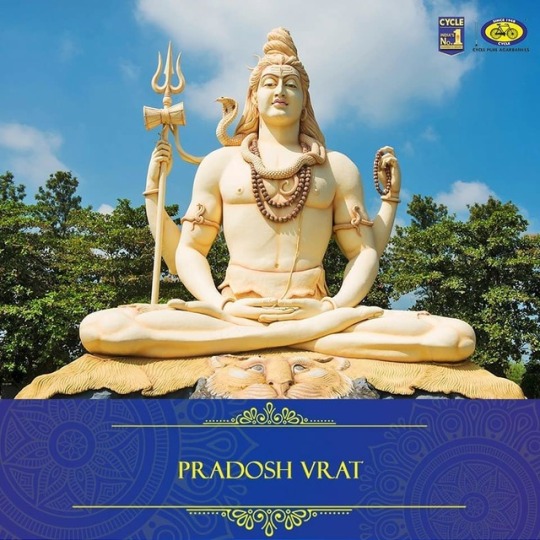
*Pradosh Vrat* Pradosh Vrat is celebrated today, 14th July 2019. For this significant festival dedicated to Lord Shiva, let us take a look at why Indian mythology describes the lord as surrounded by all manner of spirits, ghosts and ghouls. According to the Ganachakra, an ancient Tantric text, once Goddess Parvati asked Lord Shiva why he liked to live in a graveyard, surrounded by spooks, hobgoblins and spirits. He answered that when he was looking for a peaceful place to meditate, he looked everywhere but couldn’t find anything. So out of anger and frustration he created all the terrible Ganas – the spirits, spooks, and ghosts. But he soon realised that it would be bad if all those Ganas tormented the people. He then took all the spirits and kept them under his control in the graveyard. The graveyard was also a peaceful place where he could meditate. This also had the added advantage that nobody who feared the ghosts would come near him, but only the pure and the fearless people who had real devotion to him would. ☺#mic✔ツ (at Chittoor, Andhra Pradesh) https://www.instagram.com/p/Bz5UMVWH8le8URO0Dj7-5-BPm_0_7zkPcOCFcc0/?igshid=wep0l17rw76o
0 notes
Text
I follow no religion but I somehow ended up an adherent of Tantra.
Tantra (Sanskrit: तन्त्र; literally "loom, weave") denotes the esoteric traditions of Hinduism and Buddhism that co-developed most likely about the middle of 1st millennium CE. The term tantra, in the Indian traditions, also means any systematic broadly applicable "text, theory, system, method, instrument, technique or practice".
In Hinduism, the tantra tradition is most often associated with its goddess tradition called Shaktism, followed by Shaivism and Vaishnavism. In Buddhism, the Vajrayana tradition is known for its extensive tantra ideas and practices. Tantric Hindu and Buddhist traditions have influenced other religious traditions such as Jainism, Sikhism, the Tibetan Böntradition, Daoism, and the Japanese Shintō tradition.
The Keśin hymn of the Rig Veda (10.136) describes the "wild loner" who, states Karel Werner, "carrying within oneself fire and poison, heaven and earth, ranging from enthusiasm and creativity to depression and agony, from the heights of spiritual bliss to the heaviness of earth-bound labor". The Rigveda uses words of admiration for these loners, and whether it is related to Tantra or not, has been variously interpreted. According to David Lorenzen, it describes munis (sages) experiencing Tantra-like "ecstatic, altered states of consciousness" and gaining the ability "to fly on the wind". In contrast, Werner suggests that these are early Yoga pioneers and accomplished yogis of the ancient pre-Buddhist Indian tradition, and that this Vedic hymn is speaking of those "lost in thoughts" whose "personalities are not bound to earth, for they follow the path of the mysterious wind"
Sadhanas
A number of techniques (sadhana) are used as aids for meditation and achieving spiritual power:
Dakshina: Donation or gift to one's teacher
Diksha: Initiation ritual which may include shaktipat
Yoga, including breathing techniques (pranayama) and postures (asana), is employed to balance the energies in the body/mind.
Mudras, or hand gestures
Mantras: reciting syllables, words, and phrases
Singing of hymns of praise (stava)
Mandalas
Yantras: symbolic diagrams of forces at work in the universe
Visualization of deities and Identification with deities
Puja (worship ritual)
Animal sacrifice
Use of taboo substances such as alcohol, cannabis, meat and other entheogens.
Prayashcitta - an expiation ritual performed if a puja has been performed wrongly
Nyasa
Ritual purification (of idols, of one's body, etc.)
Guru bhakti (devotion) and puja
Yatra: pilgrimage, processions
Vrata: vows, sometimes to do ascetic practices like fasting
The acquisition and use of siddhis or supernormal powers. Associated with the left hand path tantra.
Ganachakra: A ritual feast during which a sacramental meal is offered.
Ritual Music and Dance.
Maithuna: ritual sexual union (with an actual physical consort).
Dream yoga
2 notes
·
View notes
Photo
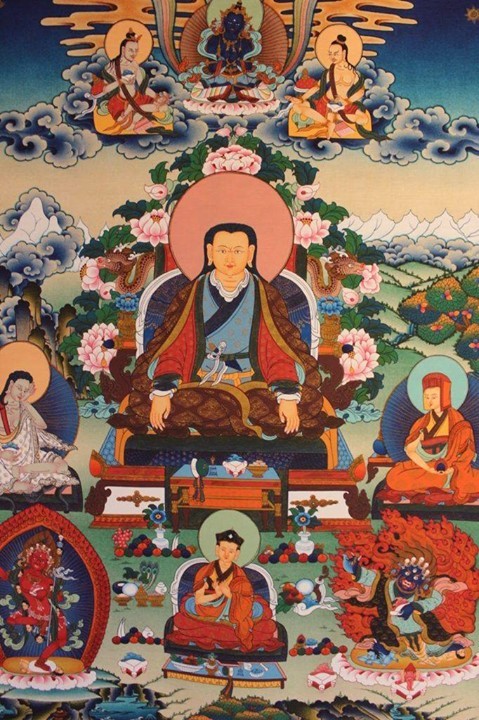
The Kagyu Golden Rosary - Marpa Marpa travelled to India from Tibet at great personal peril across the Himalayas to study with his principal teachers, Naropa and Maitripa. Marpa Chökyi Lodrö, was born in Lhodrak Chukhyer to a well-to-do family. He began studying at a young age and was wild and untamed compared to other children. Marpa first received training for three years at Mangkhar with Drokmi Shakya Yeshe and mastered the Sanskrit language. He decided to travel to India to study dharma with renowned Indian buddhist masters. Marpa returned home to Lhodrak and converted his entire inheritance into gold for his travel expenses and to make offerings to his Indian gurus for requested teachings. JOURNEYS TO INDIA Marpa set out on his journey to India. Arriving first in Nepal, he studied with Paindapa and Chitherpa, two famous students of Naropa. Later, Paindapa accompanied Marpa to Pullahari, near Nalanda University, where Naropa taught. Marpa spent twelve years receiving abhishekas, instructions, and studying with Naropa and other great Indian gurus to whom Naropa sent him to study or receive instructions. At the end of twelve years, Marpa offered a ganachakra and sang his first song of realization to his guru, Naropa. Shortly after, he set forth on his journey back to Tibet, where he taught and continued his dharma activities. Subsequently, Marpa traveled to India two more times and studied with Naropa and other great mahasiddhas of India. Of these, his main gurus were Naropa and Maitripa. In total, he traveled three times to India and four times to Nepal. On his third visit, Marpa went through an adventure in finding Naropa, because Naropa, having already entered into the tantric conduct, was nowhere to be found. However, with determination, trust, and devotion, Marpa managed to find Naropa and receive the final teachings and instructions from him. At that time, Naropa prophesied that a family lineage would not continue for Marpa, but that his lineage would be carried on by disciples—especially one with the appearance of a monk and the inner realization of Mahayana. This prophecy foretold of the arrival of Lord Gampopa. BRINGING THE COMPLETE DHARMA TO TIBET Marpa now had received the full transmissions, so Naropa formally declared Marpa to be his dharma successor. Marpa brought the teachings and lineages of vajrayana and mahamudra back to Tibet. Naropa in general had seven major disciples including Paindapa, Chitherpa, Shri Shantibhadra or Kukuripa, and Maitripa. His most well known disciple and lineage holder was the Marpa, the translator. Upon his return to Tibet, Marpa spent many years translating Buddhist scriptures and contributed to the effort to bring the complete buddhadharma to Tibet. Many of his translations are part of the Kagyur and Tangyur. Marpa continued to practice and give teachings, abhishekas, and transmissions to many students in Tibet. After his third visit to India, Mila Thöpaga or Milarepa became his disciple, who inherited his lineage in full. Marpa along with his wife, Dakmema and their sons lived in Lhodrak in the southern part of Tibet. Marpa had numerous disciples. The four most outstanding students were known as the “Four Pillars:” 1) Ngok Chöku Dorje, who became the principal student to receive the transmissions and master the explanations of the Tantras, 2) Tsurtön Wanggi Dorje, who became the main student to receive the transmissions and master the practice of Phowa [transference of conciousness], 3) Meytön Chenpo, who became the primary student to receive the transmissions and master the practice of Ösal [luminosity], and 4) Milarepa, who became the principal student to receive the full transmissions and master the view, meditation, and conduct. Marpa gave the full transmission of his lineage to Milarepa, who became his spiritual heir and continued the lineage of Naropa. The principal student and lineage heir of Marpa was Milarepa. source: http://bit.ly/2kpyApc
2 notes
·
View notes
Text
i’m back in portland after quite possibly the weirdest ganachakra that has ever occurred. i’m honestly still processing it
anyway [opens bottle of hard cider with a swiss army knife]
1 note
·
View note
Video
youtube
Gangtey Trulku Presiding Ganachakra rituals for late His Holiness 68th J...
0 notes